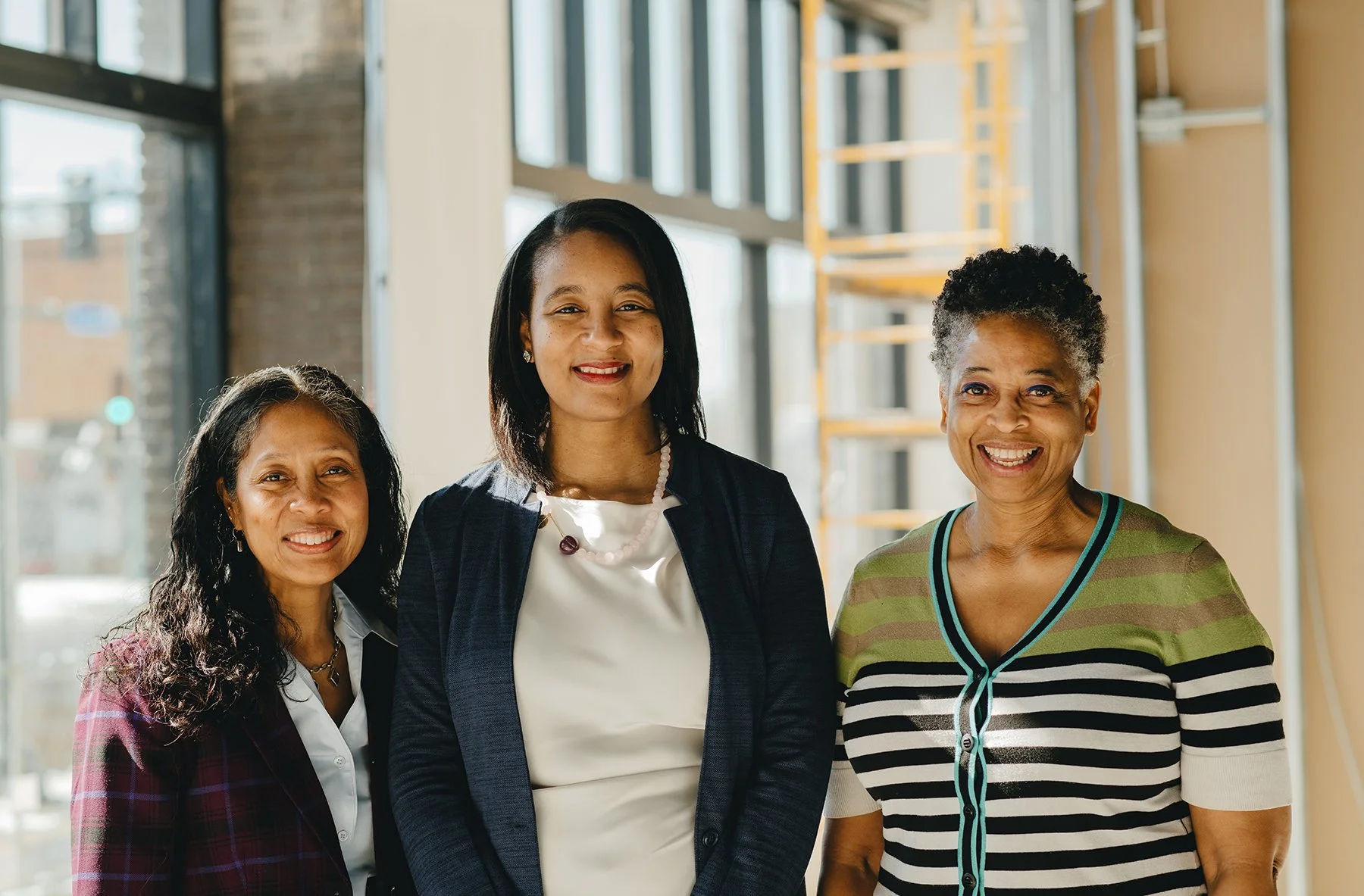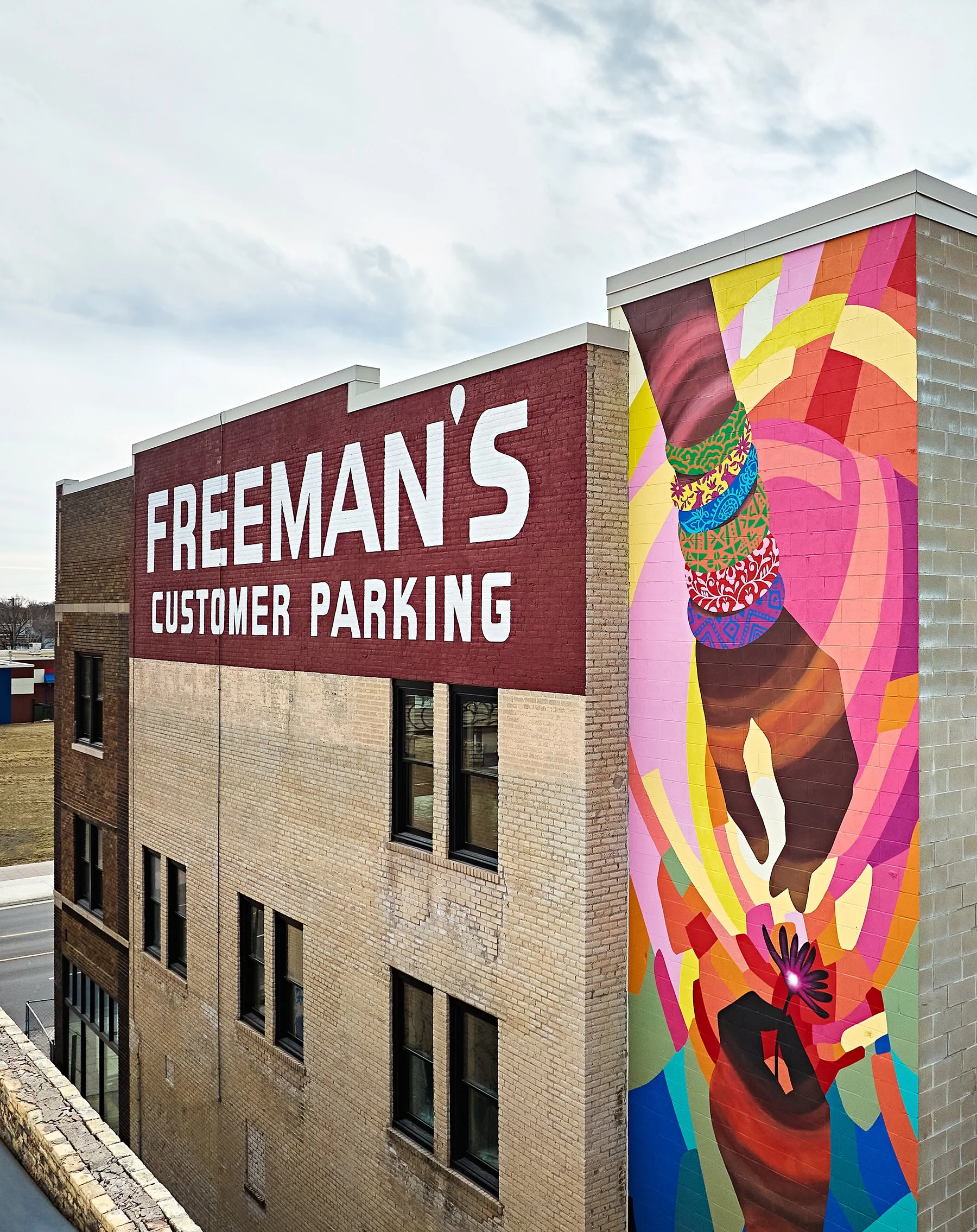Financing the Revival of the Coliseum Building
Nonprofit developer Redesign pursued a complex financing structure to redevelop the Minneapolis landmark as a hub for BIPOC businesses
By Frank Jossi | June 20, 2024
The 1917 Coliseum Building on East Lake Street in Minneapolis as renovations neared completion in March. Photo by Round Three Photography.
FEATURE
This article expands on the “Coliseum Comeback” feature in the 2024 ENTER print annual.
After serving as an anchor on East Lake Street in South Minneapolis for more than a century, the Coliseum Building suffered fire damage during the unrest following George Floyd’s murder.
The three-story, 85,000-square-foot former department store survived, but the owners wanted to demolish it before Redesign, Inc., a community development organization with deep roots in the Longfellow area, bought it for $2 million in 2021. The nonprofit then employed a necessarily complex financing plan—no simple options existed—to pay for its $28 million revival.
The Coliseum Building’s grand reopening this week on Juneteenth was the culmination of a collaboration between Taylor Smrikárova, Redesign’s Real Estate Development Director; the project’s architect, Alicia Belton, FAIA, owner of Urban Design Perspectives; Janice Downing, owner of Commonsense Consulting@Work; and Shanelle Montana, owner of the building’s new restaurant and Du Nord cocktail room.
From left to right: Urban Design Perspectives’ Alicia Belton, FAIA, Redesign’s Taylor Smrikárova, and Commonsense Consulting@Work’s Janice Downing. Photo by Roy Son.
Smrikárova, a veteran of challenging projects, says the renewal of the Coliseum Building proved unique in many ways, requiring nine lenders who sometimes used money from programs no longer available. “Overall, I think the project is an example of what’s possible, but I don’t think it’s replicable,” she says. “It should not have been this hard to pull this off.”
She adds that the completed project is “a testament to collaboration among a bunch of different groups to refinance and do a construction project that the community is going to benefit from.”
Half of the $28 million project cost was financed with loans using New Markets Tax Credits (NMTCs) and historic tax credits (HTCs). To complete the financing, Redesign pieced together direct loans, grants, a Property Assessed Clean Energy (PACE) loan, and philanthropy.
Smrikárova says Redesign made an initial investment to get the ball rolling. She then became the translator for the different parties involved in the financing, helping them understand their role and their relationship to other funders who had stepped up. Brian Gorecki, Faegre Drinker, and CohnReznick assisted Smrikárova in navigating the financing opportunities.
The NMTC Program played a crucial role in Redesign’s capital stack (the layers of equity and debt in commercial real estate transactions). The program was established in 2000 to expand economic opportunities in underserved communities by supporting community development financial institutions (CDFIs) and community development entities (CDEs). Investors provide equity investments to CDFI or CDE organizations and take 39 percent in tax credits over seven years.
“Overall, I think the project is an example of what’s possible, but I don’t think it’s replicable. It should not have been this hard to pull this off.”
Sunrise Banks, Detroit Lakes–based Midwest Minnesota Community Development Corporation, and Mid-City Community CDE provided $14.7 million in six NMTC loans—half typical A loans and the rest B loans that mature after seven years unless refinanced.
Redesign leveraged that funding with federal and state HTCs that would pay for a third of the redevelopment. Only buildings that are listed on the National Register of Historic Places or certified as contributing to the significance of a registered historic district can apply for historic tax credits, so Redesign first had to pay for a study that would support the Coliseum Building’s nomination for the National Register.
There was no guarantee that the National Park Service, which administers the National Register, would approve the application, but it did, in 2022. That timing was good fortune, as it allowed the project to qualify for the 20-percent Minnesota Historic Structure Rehabilitation Tax Credit before it expired in June 2022. (The state legislature reinstated the program in 2023.)
Together, federal and state HTCs amounted to 40 percent of the costs of redeveloping the Coliseum Building. The project may not have been possible without them.
Smrikárova says equity came from a loan offered by the city’s Commercial Property Development Fund. Belton, Downing, and Montana used the $1.5 million loan—$500,000 for each party—to buy into the project. The city will forgive the loan after 40 years if Belton, Downing, and Montana remain the owners or assign heirs.
The east side of the Coliseum Building now displays a restored Freeman’s parking sign and a vibrant two-story mural by artist Kada Goalen. Photo by Round Three Photography.
Redesign leveraged the $14.7 million through money from federal and state HTCs managed by the Local Initiatives Support Corporation (LISC). The Metropolitan Consortium of Community Developers (MCCD) offered $1 million by tapping a legal loan source that had never been used.
After working with so many institutions, Smrikárova came away surprised by their flexibility. “They were willing to do things differently because they believed in the project,” she says. Belton agrees: “Our lenders understand the need in this particular neighborhood at this particular time and the unique things we’re trying to do.”
Other sources came forward during the project’s early days. Redesign secured a $2.1 million PACE loan. Seven grants totaling more than $4 million came from six government agencies and foundations, including Hennepin County, the Minnesota Department of Employment and Economic Development, the Metropolitan Council, the McKnight Foundation, the Restore-Rebuild-Reimagine Fund, and the Margaret A. Cargill Foundation.
Redesign will refinance the Coliseum Building in six years, minus the grants and loan money that do not have to be paid back. The nonprofit’s debt will be retired to allow the Coliseum Building’s co-owners to keep their taxes low or neutral.
Belton and Downing have their respective offices on the second floor of the building and sublease the remaining space. The Du Nord cocktail room and restaurant occupy space on the first floor. The project hopes to attract more BIPOC businesses or businesses that serve the BIPOC community, and the early reviews are uniformly positive. “People who tour the building say it’s beautiful—almost too nice,” says Belton. “That’s a compliment we’ll accept!”
Smrikárova says the key to a project like the Coliseum Building is to secure early funding from reputable partners who will help convince other lenders to sign on. As the financial coordinator for the project, she moved quickly when an opportunity arose and kept collaborators informed of funding progress. Being in the right place at the right time helps.
Lenders and nonprofits stepped up following the reckoning Minneapolis endured after George Floyd’s death ignited days of civil unrest. “All the different sources we used are interesting, and they have their own stories,” says Smrikárova. “Most of them are mission-based or focused on the public good, so they want more than just a return. They want to say they did something good for the community.”





